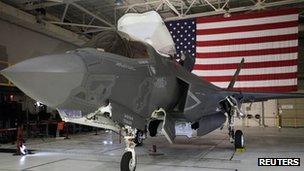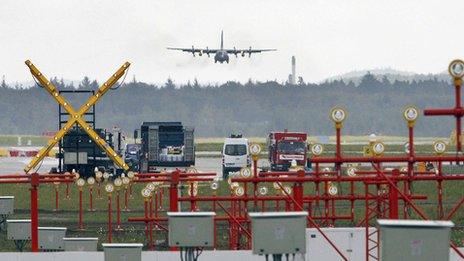Deflating a military spending balloon
- Published
- comments

The US military will still invest in special operations and unmanned technology
America is cutting 100,000 combat troops. Plans for new subs and fighter jets have been put on hold. Older ships and aeroplanes will be scrapped.
This, of course, is all driven by the need to spend less. But it isn't only that.
It is all but politically inconceivable that America is going to fight a ground war and occupy another country - at least under this president.
Where possible, President Barack Obama favours quick in-and-out operations by special forces, such as the mission to kill Osama Bin Laden or rescue the hostages in Somalia.
Drone attacks on America's enemies have shot up since Mr Obama has been in the White House.
Of course, war is not always going to be that asymmetrical. The US could face challenges more severe than a bunch of criminal hostage-takers.
So aircraft carriers will be used to project American power in the Pacific and in places like the Strait of Hormuz.
The Middle East, they say, is a new priority (remind me, where is Iraq, again?).
Some Republicans say this dangerous: you can never tell what the next threat will be and you have to be tooled up to deal with any conceivable danger.
But this is about deflating the ballooning of military spending after 9/11.
America will still have more fighting troops in the future than it did in 2002 and dramatically out-spend its nearest rival, China.
Size isn't everything. America and its allies won quickly in Iraq and Afghanistan, but neither war is ending with a solid sense of "mission accomplished."
After these cuts, the US will still be the most formidable fighting force the world has ever known. Just not quite as big as it once was.
- Published26 January 2012

- Published13 January 2012

- Published5 January 2012